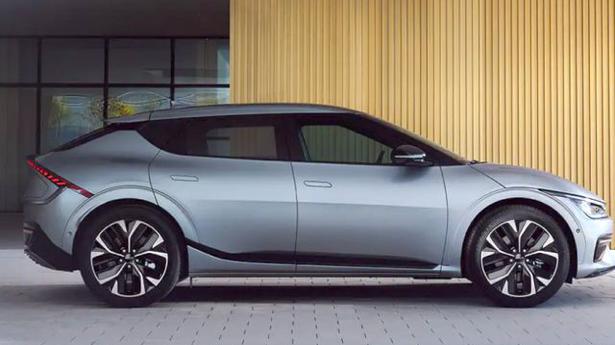
Kia India opens bookings for electric model EV6
The Hindu
Built on a dedicated EV platform — the electric-global modular platform (E-GMP), the EV6 marks the beginning of Kia's EV journey in the country.
Automaker Kia India on Thursday, May 26, 2022, said it has commenced bookings for EV6, its first electric model in the country.
Built on a dedicated EV platform — the electric-global modular platform (E-GMP), the EV6 marks the beginning of Kia's EV journey in the country.
Only 100 units of EV6, which comes as a Completely Built Unit (CBU), would be available for sales in India this year. The imported model is scheduled to be launched in the country next week.
The EV6 can be booked with a token amount of Rs 3 lakh exclusively through 15 select dealerships across 12 cities. Customers can also book through the Kia India website, it said in a statement.
"The Indian automotive industry is transforming, and Kia is at the forefront of this transformation. Time and again, we have proven it through our world-class products and services that cater to not just to the unmet but also the unfelt needs of Indians. The introduction of EV6 in the country reiterates the same," Kia India Managing Director and CEO Tae-Jin Park said.
On a single full charge, the car can travel up to 528 kilometres and can sprint from 0-100 km/h in just 5.2 seconds, according to the statement.
The vehicle can be charged from 10 per cent to 80 per cent in as little as 18 minutes using a 350KWh charger.

The Union Budget unveiled on February 1, 2025, has come at a time of unprecedented global uncertainty and a flagging domestic economy. The real GDP growth is estimated at 6.4% for 2024-25 and between 6.3-6.8% for 2025-26, a far cry from >8 percent growth required annually to make India a developed nation by 2047. While much attention has been devoted to the demand stimulus through income tax cuts, not enough is said about the proposed reforms in urban development, tariff rationalisation, and regulatory simplification aimed at making Indian cities and corporates more competitive. Since the majority of economic activity is located in cities (urban areas account for ~55% of GDP) and produced by large corporates (~40% of the national output and 55% of India’s exports), the above-mentioned reforms have a pivotal role in improving India’s trend growth rate. Below we unpack each reform.












